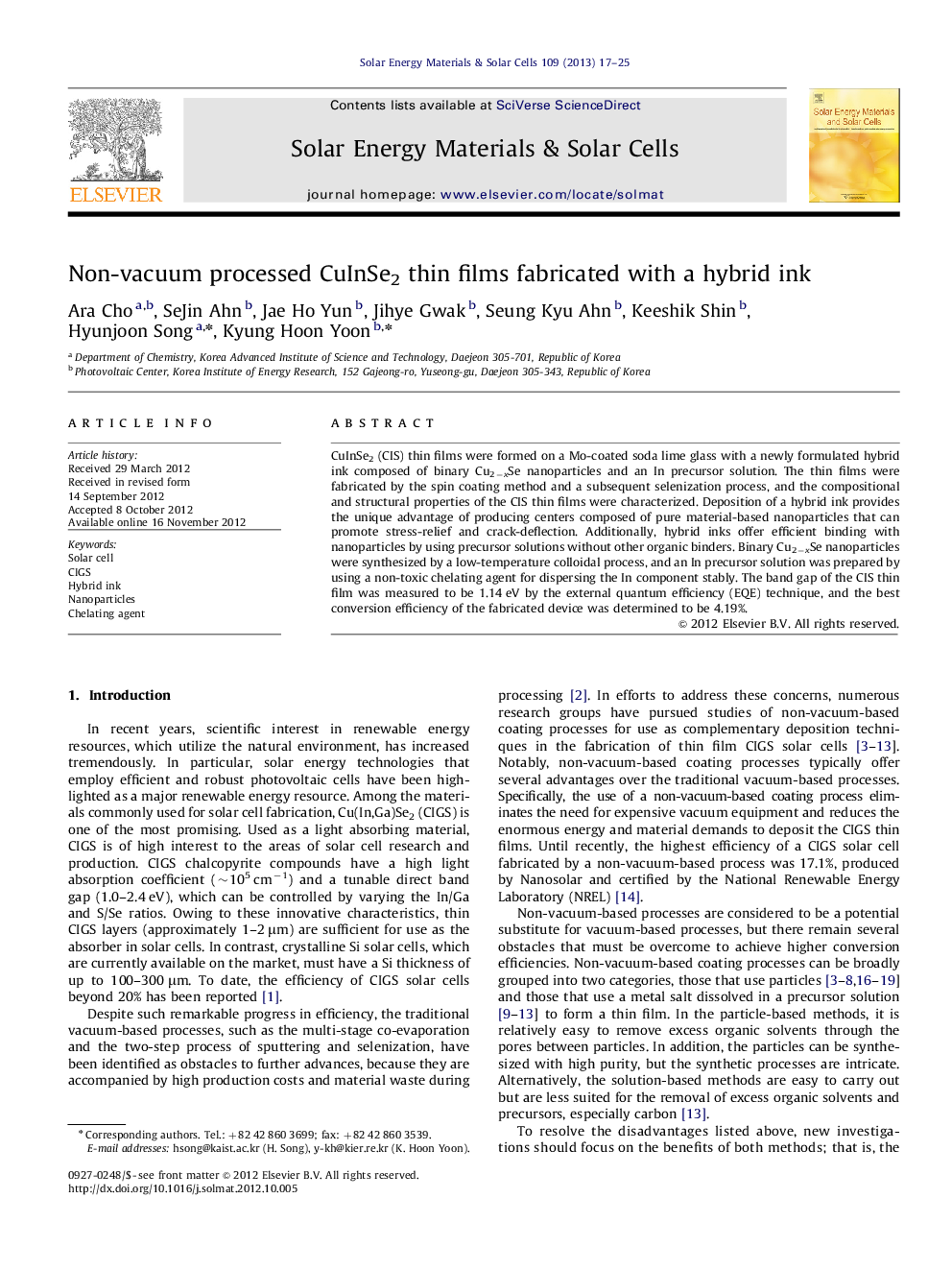| Article ID | Journal | Published Year | Pages | File Type |
|---|---|---|---|---|
| 78409 | Solar Energy Materials and Solar Cells | 2013 | 9 Pages |
CuInSe2 (CIS) thin films were formed on a Mo-coated soda lime glass with a newly formulated hybrid ink composed of binary Cu2−xSe nanoparticles and an In precursor solution. The thin films were fabricated by the spin coating method and a subsequent selenization process, and the compositional and structural properties of the CIS thin films were characterized. Deposition of a hybrid ink provides the unique advantage of producing centers composed of pure material-based nanoparticles that can promote stress-relief and crack-deflection. Additionally, hybrid inks offer efficient binding with nanoparticles by using precursor solutions without other organic binders. Binary Cu2−xSe nanoparticles were synthesized by a low-temperature colloidal process, and an In precursor solution was prepared by using a non-toxic chelating agent for dispersing the In component stably. The band gap of the CIS thin film was measured to be 1.14 eV by the external quantum efficiency (EQE) technique, and the best conversion efficiency of the fabricated device was determined to be 4.19%.
► A newly formulated hybrid ink was used as forming CuInSe2 (CIS) thin films. ► The hybrid ink consists of binary Cu2−xSe nanoparticles and Indium (In) precursor solution. ► Depositions using the hybrid ink are non-toxic and effective to disperse In component stably.
